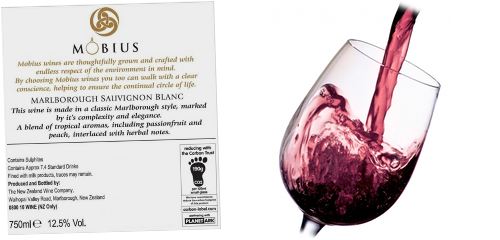
Discuss (Up to OJBs Wine Info Page) Descriptions of WineIf you are going to write wine notes you will need to know the right words to use. You can make up your own vocabulary to describe wine if you want to, but if you use more standard words you can share your thoughts with other wine enthusiasts and you are also more likely to be consistent. Note: the following mainly applies to New Zealand wine styles. Appearance and ColourYou should try to describe three aspects of the wine's appearance: clarity, the depth, and the brightness. Clarity can range from very cloudy to perfectly clear, a useful range might be: cloudy, hazy, clear, bright. Depth can be described as pale, light, medium, deep and dark. Brightness can be flat, dull, bright and vivid. Colour of a white range can range from colourless through to almost brown, depending on the variety and age of the wine. Here's a range of descriptions which might be useful: colourless, green tint, pale straw, straw, yellow, yellow gold, gold, amber. For reds, lighter young wines tend to be more purple in colour so the range might be: purple, ruby, red, brick red, orange, amber, and brown. Bouquet and FlavourThe smell and taste of the wine are closely related and you can use similar descriptive words for both. Obviously the flavours will depend on the type of wine. Descriptions for fruit flavours include the following: citrus fruits, such as lemon and lime are common, especially in riesling and sauvignon blanc. Sometimes orange and grapefruit can also be detected. Gooseberry is the signature of sauvignon blanc, especially from Marlborough. Melon is quite common in chardonnay. Pineapple and apple is common in riesling, especially the sweeter and medium varieties. Other fruits such as apricot and pear are found in whites. Cherry is quite common in pinot noir. Black berry and currant is typical of cabernet sauvignon. Plum is often found in merlot. Other fruit flavours which might be encountered in reds are: blueberry, figs and strawberry. Some whites, such as riesling, and the occasional red might exhibit floral characteristics. Examples are: flowery (a general term), rose, and violets. Spiciness is often found in whites, especially gewurztraminer, and fruitier styles of red. Spice flavours can include the following. Pepper is common in reds, especially Australian shiraz. Ginger is found in spicier styles of white. Other spicy flavours encountered are: anise and cinnamon. A major character of white wines in particular is acid. Acid balances the fruit sweetness of many wines and prevents them from becoming cloying (or too sweet). Acid is important to produce crispness in white wines, and (along with tannins) firmness in reds. Tannins are produced from skin, pips and stalks and give wine a bitter flavour. Good use of tannins is essential in many wines, especially reds, and gives balance to the sweeter fruity flavours, as well as providing preservation. Tannin usually mellows with age, but too much can still be a problem. Oak or wood flavours come from the barrels the wine is aged in. These flavours can be vanilla, smokey and charred, depending on the type and age of wood used, as well as the time in contact with the wood. Cabernet sauvignon and chardonnay often have significant amounts of wood flavour. Fruitier styles, especially whites like sauvignon blanc, often have no wood flavour at all, because they haven't been aged in oak. Not surprisingly, wines also contain alcohol. Usually this will be around 11% to 15% although some wines are above and below these extremes. High alcohol wines generally show significant "legs", or streams of liquid forming on the edge of the glass when it is tilted. Like the other components, alcohol should be balanced, and appropriate to the style. Some wines exhibit savoury flavours. These can include mushroom, earth, and leather. While these might not sound attractive, they are an important part of the complexity of some wines, especially pinot noir. Earthy flavours, in the right proportion are considered critical in many wine styles, and are not to be confused with unwanted vegetative and other flavours, which usually give the wine a dirty characteristic. ![[Up]](../XuShared/Up2B.jpeg)
![[Comment]](../XuShared/Comment2B.jpeg)
Insert query failed: INSERT INTO log VALUES (NULL,1,'2025-12-30','094302','Descriptions.html','XuWineInfo','216.73.216.208','Mozilla/5.0 AppleWebKit/537.36 (KHTML, like Gecko; compatible; ClaudeBot/1.0; +claudebot@a','');. |